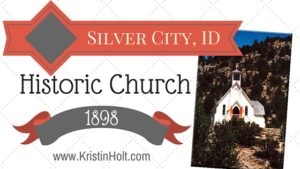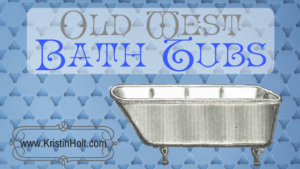Top 5 Reasons AUTHORS of Western Historical Romance Benefit From Visiting Historical Museum Residences
Top 5 Reasons AUTHORS of Western Historical Romance Benefit From Visiting Historical Museum Residences
.
While this Top 5 is for Authors, Readers will enjoy it too! Don’t miss my companion article, Top 5 Reasons READERS of Western Historical Romance Benefit from Visiting Historical Museum Residences.
.

.
1. Authors of Historical Works need Historical Knowledge
.
Historical accuracy is essential. Authors understand readers are bright, knowledgeable, and often know more about history than writers. It behooves us to check our facts. And smarter to constantly build upon an underlying knowledge of history.
.
Touring museum houses brings historic research into a kind of irreplaceable 3-D focus. Walking through a true Victorian American West house far better informs. Experience history!
.

Bellevue log cabin: oldest standing structure in Nebraska. Image courtesy of Pinterest.
.
2. Accumulation of Ideas
.
Creativity benefits!
.
“Where do you get your ideas?” Visiting museum houses is one of my top creativity sparks.
.
![Kristin Holt | Top 5 Reasons AUTHORS of Western Historical Romance Benefit From Visiting Historical Museum Residences. Photograph of 19th century homes at This is The Place Heritage Park. [https://www.thisistheplace.org/] Kristin Holt | Top 5 Reasons AUTHORS of Western Historical Romance Benefit From Visiting Historical Museum Residences. Photograph of 19th century homes at This is The Place Heritage Park. [https://www.thisistheplace.org/]](https://www.kristinholt.com/wp-content/uploads/2015/08/Log-Cabin.-this-is-the-place-monument.-shutterstock_159368837-SMALLER.jpg)
Photograph of 19th century homes at This is The Place Heritage Park.
.
3. Perspective: Big v big
.
When I enter a restored house as a tourist, I see what mansions in the Western Victorian Era looked like. Not merely furnishings, period artwork, and family photographs, the structure itself speaks for the nineteenth century. Attitudes of the middle- and upper classes guided floor plans and features.
.
For example, spartan servant’s quarters are relegated to the main floor (or attic) where the master and misses never kept a room. Unless illness or old age demanded it, residing on the second floor illustrated Victorian class distinction.
.

Winchester’s Bedroom in the Winchester Mansion. Image Courtesy of Insider.
.
I’ve gained a good deal of perspective about “mansions” of yesteryear. Compared to today’s palatial houses, 19th century mansions contained much less square footage. Another significant difference was the allotment of that space.
.
For example, master bedroom closets were seldom more than six square feet. Yet attics were large, often the entire uppermost level of the home. Attics served long-term storage purposes as well as bed space for live-in help. The concept of central heating was new at the end of the 19th century (and original to the Flavel House). Fireplaces remained common in most rooms (in addition to central heating). Did you know households changed draperies with the seasons? Some to keep heat in and cold out, others to limit the sun’s damage on upholstery.
.

Molly Brown’s Horsehair Sofa. Image Courtesy of Molly Brown.org.
.
The Molly Brown House in Denver was considered a grand mansion in its day, yet it’s smaller than many of the new homes in my city.
.
19th century wide hallways and skeleton keyholes in intricately carved and polished doors sparked my imagination for The Menace Takes a Bride.
.
.
In contrast, the “tiny house” reality of log-cabin living in frontier America can be experienced. Numerous restored (or 19th century replica) log cabins are open for tours.
.

Interior of Thompkins Cabin at Log Cabin Village in Ft Worth, Texas. Image courtesy of Library of Congress, no copyright restrictions. Citation permalink. See an incredible 3-D photographic view of the front of historic Thompkins Cabin.
.
Whether characters live in a one-room cabin or a grand mansion of the New Money Elite, perspective matters.
.
4. Historical Innovation Timeline
.
Pay attention to construction dates. And note elements original to the house. This framework is priceless to historical romance writers.
.
I track the historical timeline of inventions. Why? To recall when progressive, cutting-edge, and newfangled devices became available in the applicable region of the country. Running water, flushing toilets, central heat. Electric lights, gas lights, telephones, typewriters, and telegraph. Cash registers and cisterns. The more my personal timeline fills in, the less additional research I must conduct. The more museum residences I tour, the better the setting of my fiction.
.
5. Authors Pattern Fiction After Historical Fact
.
I pattern fiction after fact. I believe most authors of historical fiction do. After all, we want our readers to believe it could have happened. Fiction is supposed to mirror life.
.
.
The cabin in Gideon’s Secondhand Bride is like those at Heritage Village and Pioneer Village. The larger, more well-to-do homes in my The Husband-Maker Trilogy titles The Menace Takes a Bride and The Cowboy Steals a Bride combine architectures from west coast museums.
.
.
Some of the houses I’ve visited: Sheldon House and Wells-Thorn House in Historic Deerfield. Molly Brown House. Old Sturbridge Village. This is The Place Heritage Park (specifically Heritage Village). Pioneer Village. Flavel House. Winchester Mystery House. Mount Vernon. Salem’s Phillips House. Abraham Choate House (now at Smithsonian). Leland Stanford Mansion. The Beehive House. Stricker Mansion. And many more.
.
ALL of my titles are presently FREE Reads with kindleunlimited.
.
Invitation
.
Authors, what Museum Residences have you toured?
What did you learn from your visits to restored or preserved houses?
Why is it important for you, as an author, to visit historic buildings in person?
.
Related Articles
.
.
Updated July 2022
Copyright © 2015 Kristin Holt LC
Top 5 Reasons AUTHORS of Western Historical Romance Benefit From Visiting Historical Museum Residences Top 5 Reasons AUTHORS of Western Historical Romance Benefit From Visiting Historical Museum Residences






































